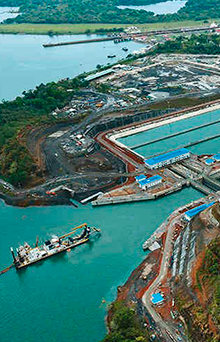 IAHR Hydro-Environment Local Heritage Award
Founding Statement
Rules for the administration of the award
List of previous winners
IAHR Hydro-Environment Local Heritage Award
Founding Statement
Rules for the administration of the award
List of previous winners IAHR Hydro-Environment Local Heritage Award
Established in 2012, the IAHR Hydro-Environment Local Heritage Award is conferred on a local infrastructure of lasting and international importance. It has the purpose of giving international professional recognition to the work of local hydro-environment engineers, and should demonstrably have stood the test of time (be at least a hundred years old) and be accepted and valued nationally.
The Local Organising Committee (LOC) of each IAHR World Congress is invited to submit a proposal for the award to the Council meeting one year before the Congress for approval. If no proposal is submitted by the LOC, the Council may wish to consider submissions from other parts of the world. In approving a proposal for the award, the Council takes into account the lasting nature of the infrastructure, the value placed on the infrastructure by the local community, its international significance, and a clear interest of the proposed recipient for the award.
For further information, please refer to our FAQs section on our website. Additional enquiries should be directed to the IAHR Secretariat via email to awards@iahr.org
6th IAHR Hydro-Environment World Heritage Award | 2023
The First Vienna Mountain Spring Pipeline, Austria. Opened in 1873. A major part of Vienna's water supply and the first source of safe drinking water for the city.
5th IAHR Hydro-Environment World Heritage Award | 2022
Conde del Guadalhorce Dam, Spain
4th IAHR Hydro-Environment World Heritage Award | 2019
Panama Canal Authority, Panama
3rd IAHR Hydro-Environment World Heritage Award | 2017
Terusan Wan Mat Saman (Wan Mat Saman Canal), Malaysia. Muda Agricultural Development Authority (MADA)
2nd IAHR Hydro-Environment World Heritage Award | 2015
Dutch Water Boards, Netherlands.
1st IAHR Hydro-Environment World Heritage Award | 2013
Dujiangyan Irrigation System, China. This is an irrigation infrastructure built in 256 BC during the Warring States period of China by the Kingdom of Qin. It is located in the Min River in Sichuan province, China, near the capital Chengdu. It is still in use today to irrigate over 5,300 square kilometers of land in the region.